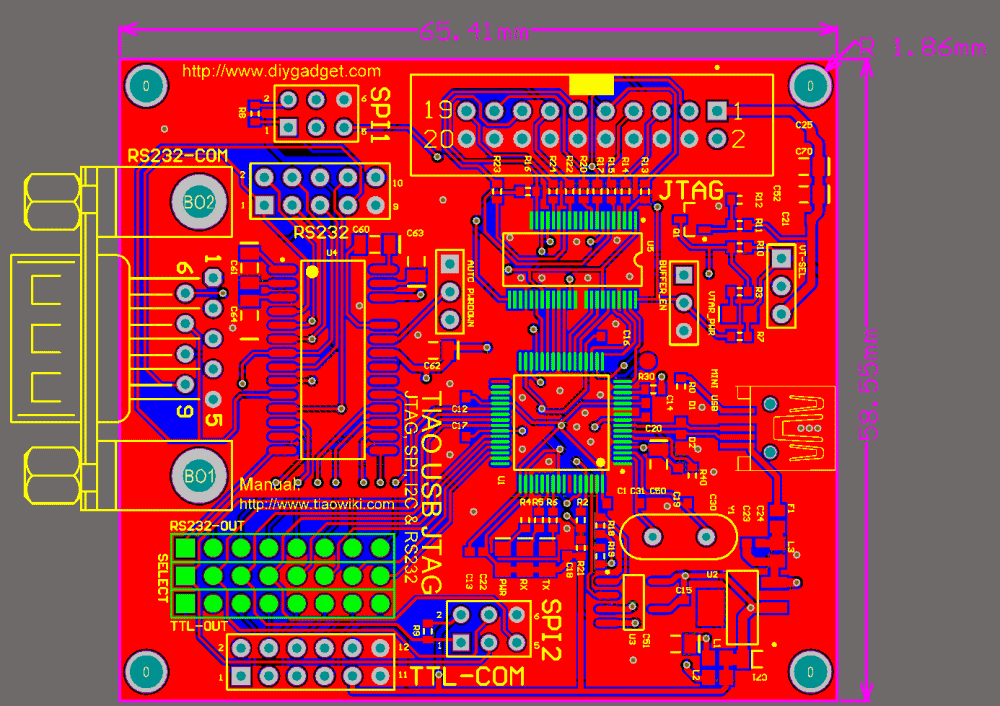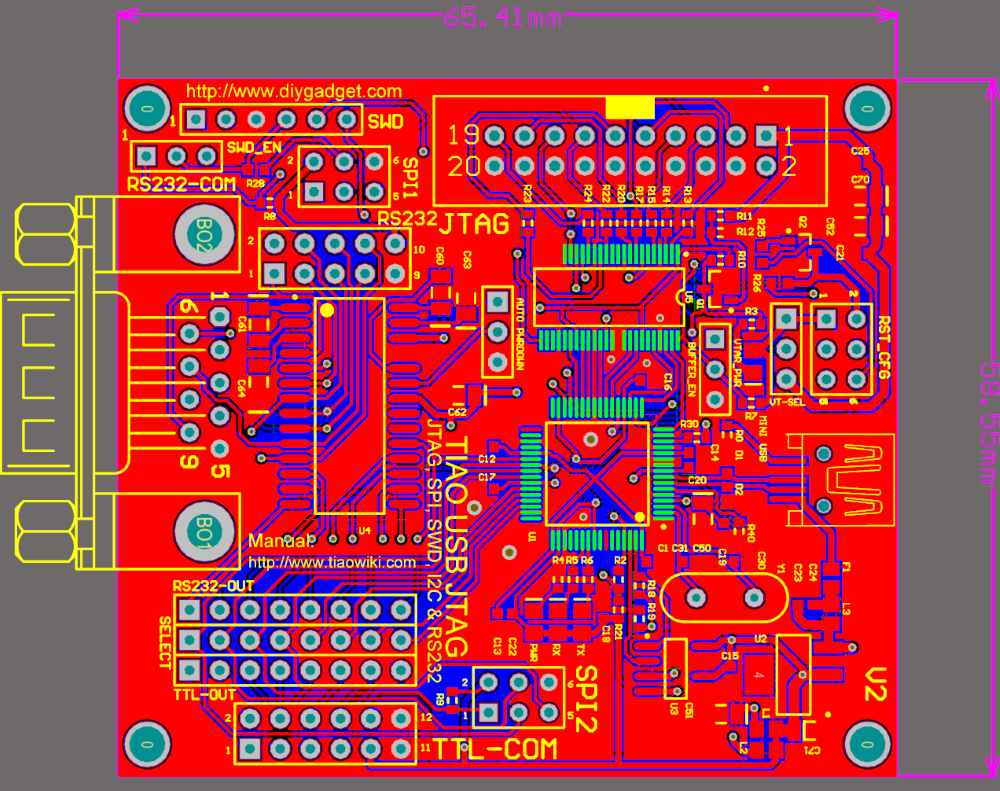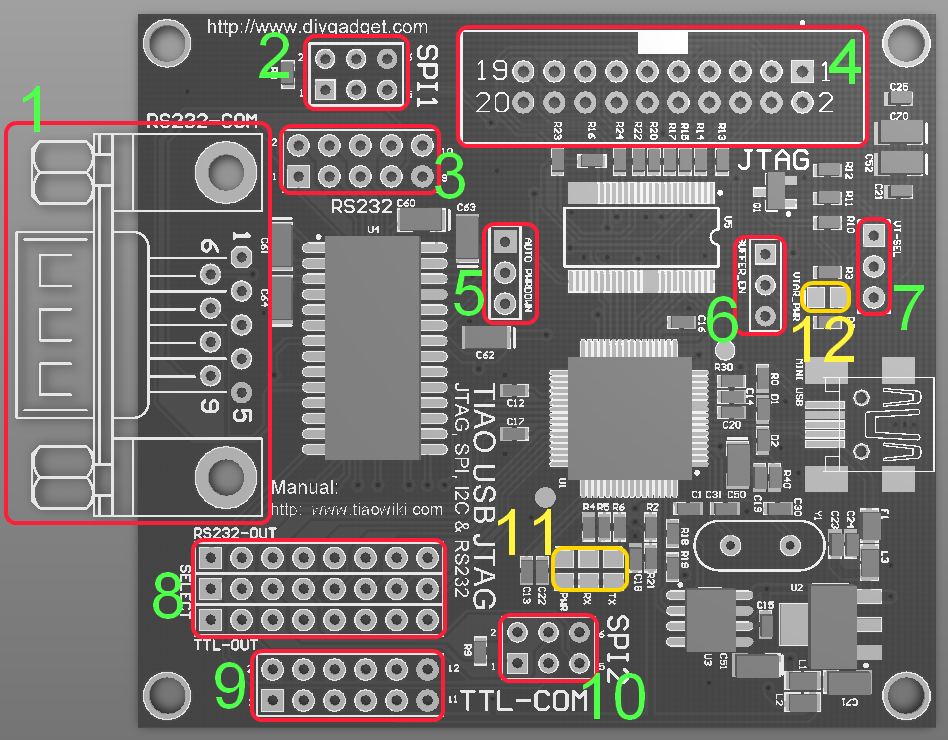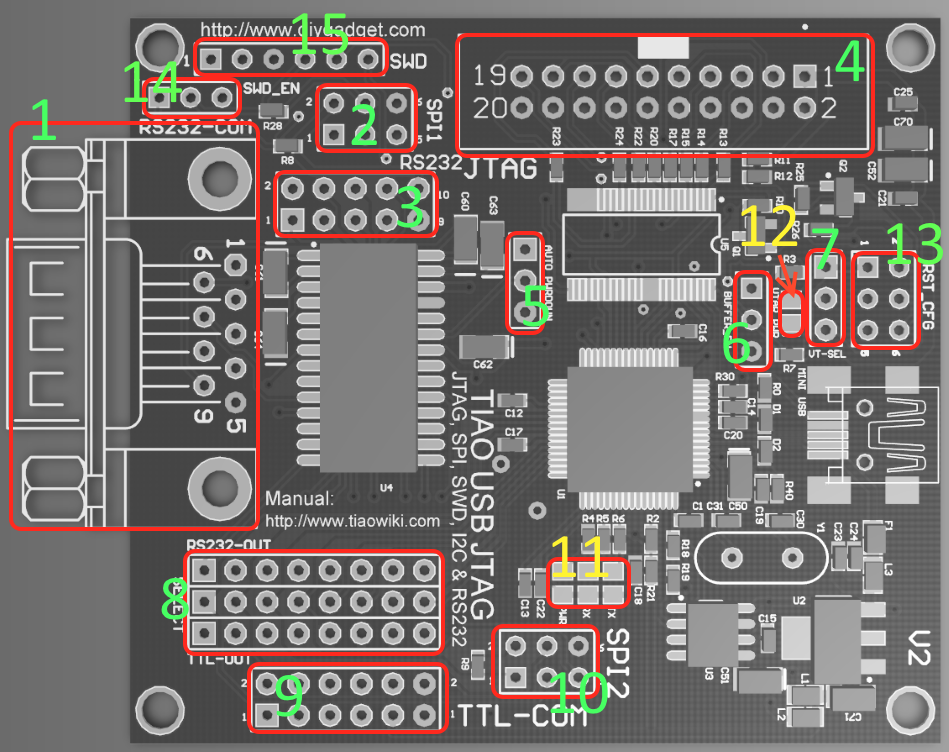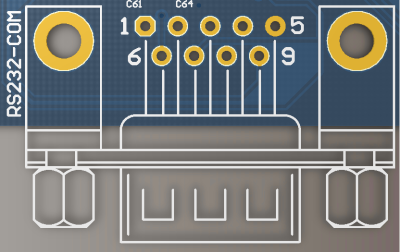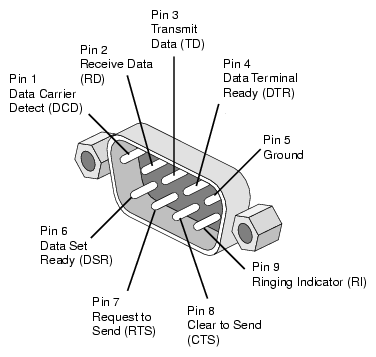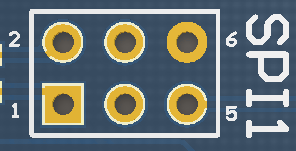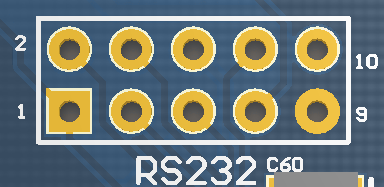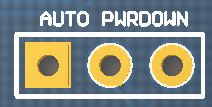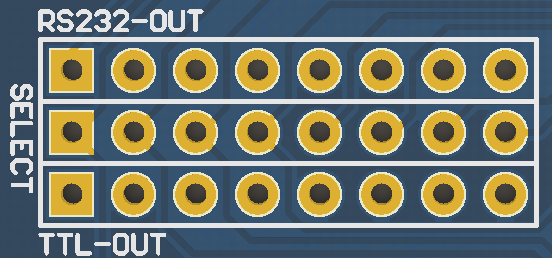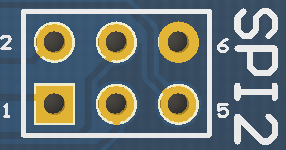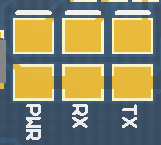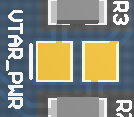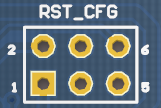Difference between revisions of "TIAO USB Multi Protocol Adapter User's Manual"

10 PCS, 10cm x 10cm, 2 layers prototype for $38.80 shipped!
(→Pin Connections) |
|||
| (37 intermediate revisions by the same user not shown) | |||
| Line 15: | Line 15: | ||
= Overview = | = Overview = | ||
| − | The [ | + | The [https://www.diygadget.com/jtag-cables-and-microcontroller-programmers/114-tiao-usb-multi-protocol-adapter-jtag-spi-i2c-serial.html TIAO USB Multi Protocol Adapter (TUMPA)] is a multi-functional USB communication adapter for hobbyists or engineers. |
The adapter is based on FDTI's flagship communication chip FT2232H, a USB 2.0 Hi-Speed (480Mb/s) to UART/FIFO IC. It has two multi-protocol synchronous serial engines (MPSSEs) which allow for communication using JTAG, I2C and SPI on two channels simultaneously. | The adapter is based on FDTI's flagship communication chip FT2232H, a USB 2.0 Hi-Speed (480Mb/s) to UART/FIFO IC. It has two multi-protocol synchronous serial engines (MPSSEs) which allow for communication using JTAG, I2C and SPI on two channels simultaneously. | ||
| + | |||
| + | Looking for PDF version of this manual? It is here: | ||
| + | |||
| + | [http://www.tiaowiki.com/download//file.php?id=38 Download PDF version of this manual] | ||
| + | |||
| + | Thanks to stealther for creating the PDF manual. | ||
= Technical Specifications = | = Technical Specifications = | ||
| − | + | * SWD support (Added in V2) | |
| + | * RST line jumper header (added in V2) | ||
* USB 2.0 Hi-Speed (480Mb/s) | * USB 2.0 Hi-Speed (480Mb/s) | ||
* JTAG / IEEE 1149.1 compatible. | * JTAG / IEEE 1149.1 compatible. | ||
| Line 49: | Line 56: | ||
* Support both 32 bit and 64 bit operating systems | * Support both 32 bit and 64 bit operating systems | ||
* Board dimension: 65.41mm X 58.55mm (2.58" X 2.31") | * Board dimension: 65.41mm X 58.55mm (2.58" X 2.31") | ||
| + | |||
| + | = Board Dimensions = | ||
| + | |||
| + | V1: | ||
| + | [[Image:Tumpa.dimension.gif|none]] | ||
| + | |||
| + | V2: | ||
| + | [[Image:Tumpav2-d.png|none]] | ||
= Board Layout = | = Board Layout = | ||
| + | V1: | ||
[[Image:tumpa.board.layout.png|none]] | [[Image:tumpa.board.layout.png|none]] | ||
| + | |||
| + | V2: | ||
| + | [[Image:tumpav2-layout.png|none]] | ||
# [[#DB9_Male_RS232|DB9 male RS232 connector (Channel B)]] | # [[#DB9_Male_RS232|DB9 male RS232 connector (Channel B)]] | ||
| Line 66: | Line 85: | ||
# [[#PWR/RX/TX_LEDs|Status LEDs. From left to right: Power (indicates TUMPA is powered on), RX and TX]] | # [[#PWR/RX/TX_LEDs|Status LEDs. From left to right: Power (indicates TUMPA is powered on), RX and TX]] | ||
# [[#Target_Board_Power_LED|Target board power LED. Indicates target board has power]] | # [[#Target_Board_Power_LED|Target board power LED. Indicates target board has power]] | ||
| + | # [[#RST_signal_polarity_select|RST signal polarity select. Change the RST signal polarity]] | ||
| + | # [[#SWD_Enable_Jumper|SWD Enable Jumper. Enable or disable SWD]] | ||
| + | # [[#SWD_Header|SWD header. Header for SWD]] | ||
= Connector Pinout & LEDs = | = Connector Pinout & LEDs = | ||
| Line 170: | Line 192: | ||
[[Image:tumpa.rs232.connector.png|none]] | [[Image:tumpa.rs232.connector.png|none]] | ||
| − | For your convenience, we added this header. This header is inter connected to the DB9 connector. The pinout is | + | For your convenience, we added this header. This header is inter connected to the DB9 connector. The pinout is different then the pinout of [[#DB9_Male_RS232|DB 9 connector]], however the extra pin (PIN 10) is connected to on board 3.3V power. GND pin (PIN 9) and +3.3V PIN (PIN 10) are always enabled regardless the jumpers position of [[#Serial_RS232/TTL_level_Selection_Jumper|Serial RS232/TTL level Selection Jumper]]. |
| + | |||
| + | This is the pinout of the RS232 level 2.54mm IDC header: | ||
| + | |||
| + | |||
| + | {| | ||
| + | ! align="left"|Pin # | ||
| + | ! Description | ||
| + | |- | ||
| + | | 1 | ||
| + | | RI | ||
| + | |- | ||
| + | | 2 | ||
| + | | DCD | ||
| + | |- | ||
| + | | 3 | ||
| + | | DSR | ||
| + | |- | ||
| + | | 4 | ||
| + | | CTS | ||
| + | |- | ||
| + | | 5 | ||
| + | | RX | ||
| + | |- | ||
| + | | 6 | ||
| + | | TX | ||
| + | |- | ||
| + | | 7 | ||
| + | | RTS | ||
| + | |- | ||
| + | | 8 | ||
| + | | DTR | ||
| + | |- | ||
| + | | 9 | ||
| + | | GND | ||
| + | |- | ||
| + | | 10 | ||
| + | | +3.3V | ||
| + | |} | ||
== 20 PIN JTAG Connector == | == 20 PIN JTAG Connector == | ||
| Line 351: | Line 411: | ||
The VTAR can also be detected by software. If VTAR has voltage > 3.3V, ACBUS4 (PIN 30) of FT2232H will be LOW. Otherwise it will be HIGH. | The VTAR can also be detected by software. If VTAR has voltage > 3.3V, ACBUS4 (PIN 30) of FT2232H will be LOW. Otherwise it will be HIGH. | ||
| + | |||
| + | == RST signal polarity select == | ||
| + | |||
| + | This header added in V2. | ||
| + | |||
| + | [[Image:RST-CFG.png|none]] | ||
| + | |||
| + | Jumper on 4 and 6: JTAG1's RST (Pin 21) directly connected to target's RST pin. | ||
| + | One Jumper on 1 and 3, another jumper on 2 and 4: JTAG1's RST (pin 21) is connected to target's RST pin via a NPN transistor to reverse the polarity. | ||
| + | |||
| + | == SWD Enable Jumper == | ||
| + | |||
| + | This jumper is added in V2. | ||
| + | |||
| + | [[image:Swd-enable.png|none]] | ||
| + | |||
| + | Jumper on 1 and 2: Enable SWD header (which disables SPI1) | ||
| + | Jumper on 2 and 3: Disable SWD header (which enables SPI1) | ||
| + | |||
| + | == SWD Header == | ||
| + | |||
| + | This jumper is added in V2. | ||
| + | |||
| + | [[Image:Swd-header.png|none]] | ||
| + | |||
| + | The pinout is compatible with ST-Link. | ||
| + | |||
| + | {| | ||
| + | ! align="left"|Pin # | ||
| + | ! Description | ||
| + | |- | ||
| + | | 1 | ||
| + | | +3.3V | ||
| + | |- | ||
| + | | 2 | ||
| + | | SWDCLK | ||
| + | |- | ||
| + | | 3 | ||
| + | | GND | ||
| + | |- | ||
| + | | 4 | ||
| + | | SWDIO | ||
| + | |- | ||
| + | | 5 | ||
| + | | NRST | ||
| + | |- | ||
| + | | 6 | ||
| + | | SWO | ||
| + | |} | ||
= Pin Connections = | = Pin Connections = | ||
| Line 362: | Line 471: | ||
| align="center" style="background:#f0f0f0;"|'''TTL Level Output Header''' | | align="center" style="background:#f0f0f0;"|'''TTL Level Output Header''' | ||
| align="center" style="background:#f0f0f0;"|'''SPI Header 2''' | | align="center" style="background:#f0f0f0;"|'''SPI Header 2''' | ||
| + | | align="center" style="background:#f0f0f0;"|'''SWD Header (Added in V2)''' | ||
| align="center" style="background:#f0f0f0;"|'''Memo''' | | align="center" style="background:#f0f0f0;"|'''Memo''' | ||
|- style="align=center;background:white; color:black" | |- style="align=center;background:white; color:black" | ||
| − | | ADBUS0||TCK||SCK|||||||||| | + | | ADBUS0||TCK||SCK||||||||||SWDCLK|| |
| − | |- | + | |- style="background:#f0f0f0; color:black" |
| − | | ADBUS1||TDI||MOSI|||||||||| | + | | ADBUS1||TDI||MOSI||||||||||SWDIO|| |
| + | |- style="align=center;background:white; color:black" | ||
| + | | ADBUS2||TDO||MISO|||||||||||| | ||
| + | |- style="background:#f0f0f0; color:black" | ||
| + | | ADBUS3||TMS||CS|||||||||||| | ||
| + | |- style="align=center;background:white; color:black" | ||
| + | | ADBUS4||RST|||||||||||||| | ||
| + | |- style="background:#f0f0f0; color:black" | ||
| + | | ADBUS5||nTRST|||||||||||||| | ||
| + | |- style="align=center;background:white; color:black" | ||
| + | | ADBUS6||DBGRQ|||||||||||||| | ||
| + | |- style="background:#f0f0f0; color:black" | ||
| + | | ADBUS7||RTCK|||||||||||||| | ||
| + | |- style="align=center;background:white; color:black" | ||
| + | | |||||||||||||||| | ||
| + | |- style="background:#f0f0f0; color:black" | ||
| + | | ACBUS0||DBGACK|||||||||||||| | ||
| + | |- style="align=center;background:white; color:black" | ||
| + | | ACBUS1||||||||||||||||Connected to nTRST pin of JTAG Header, (input) | ||
| + | |- style="background:#f0f0f0; color:black" | ||
| + | | ACBUS2||||||||||||||NRST||Connected to RST pin of JTAG Header, as (input) | ||
| + | |- style="align=center;background:white; color:black" | ||
| + | | ACBUS3||||||||||||||||OEN Pin (enable buffer chip), active low (output) | ||
| + | |- style="background:#f0f0f0; color:black" | ||
| + | | ACBUS4||||||||||||||||Target present pin. Detect VTAR, active low (input) | ||
| + | |- style="align=center;background:white; color:black" | ||
| + | | ACBUS5|||||||||||||||| | ||
| + | |- style="background:#f0f0f0; color:black" | ||
| + | | ACBUS6|||||||||||||||| | ||
| + | |- style="align=center;background:white; color:black" | ||
| + | | ACBUS7|||||||||||||||| | ||
| + | |- style="background:#f0f0f0; color:black" | ||
| + | | |||||||||||||||| | ||
| + | |- style="align=center;background:white; color:black" | ||
| + | | BDBUS0||||||TX||TX||TX||SCK|||| | ||
| + | |- style="background:#f0f0f0; color:black" | ||
| + | | BDBUS1||||||RX||RX||RX||MOSI||SWO|| | ||
| + | |- style="align=center;background:white; color:black" | ||
| + | | BDBUS2||||||RTS||RTS||RTS||MISO|||| | ||
| + | |- style="background:#f0f0f0; color:black" | ||
| + | | BDBUS3||||||CTS||CTS||CTS||CS|||| | ||
| + | |- style="align=center;background:white; color:black" | ||
| + | | BDBUS4||||||DTR||DTR||DTR|||||| | ||
| + | |- style="background:#f0f0f0; color:black" | ||
| + | | BDBUS5||||||DSR||DSR||DSR|||||| | ||
| + | |- style="align=center;background:white; color:black" | ||
| + | | BDBUS6||||||DCD||DCD||DCD|||||| | ||
| + | |- style="background:#f0f0f0; color:black" | ||
| + | | BDBUS7||||||RI||RI||RI|||||| | ||
| + | |- style="align=center;background:white; color:black" | ||
| + | | |||||||||||||||| | ||
| + | |- style="background:#f0f0f0; color:black" | ||
| + | | BCBUS0|||||||||||||||| | ||
| + | |- style="align=center;background:white; color:black" | ||
| + | | BCBUS1|||||||||||||||| | ||
| + | |- style="background:#f0f0f0; color:black" | ||
| + | | BCBUS2|||||||||||||||| | ||
| + | |- style="align=center;background:white; color:black" | ||
| + | | BCBUS3||||||||||||||||RX LED | ||
| + | |- style="background:#f0f0f0; color:black" | ||
| + | | BCBUS4||||||||||||||||TX LED | ||
| + | |- style="align=center;background:white; color:black" | ||
| + | | BCBUS5|||||||||||||||| | ||
| + | |- style="background:#f0f0f0; color:black" | ||
| + | | BCBUS6|||||||||||||||| | ||
| + | |- style="align=center;background:white; color:black" | ||
| + | | BCBUS7|||||||||||||||| | ||
| + | |- style="background:#f0f0f0; color:black" | ||
| + | | |||||||||||||||| | ||
|- style="align=center;background:white; color:black" | |- style="align=center;background:white; color:black" | ||
| − | + | | <span style="text-decoration: overline">PWREN</span>||||||||||||||||Enable MAX3243. Active low (output) | |
| − | |||
| − | |||
| − | |||
| − | |||
| − | |||
| − | |||
| − | |||
| − | |||
| − | |||
| − | |||
| − | |||
| − | |||
| − | |||
| − | |||
| − | |||
| − | |||
| − | |||
| − | |||
| − | |||
| − | |||
| − | |||
| − | |||
| − | |||
| − | |||
| − | |||
| − | |||
| − | |||
| − | |||
| − | |||
| − | |||
| − | |||
| − | |||
| − | |||
| − | |||
| − | |||
| − | |||
| − | |||
| − | |||
| − | |||
| − | |||
| − | |||
| − | |||
| − | |||
| − | |||
| − | |||
| − | |||
| − | |||
| − | |||
| − | |||
| − | |||
| − | |||
| − | |||
| − | |||
| − | |||
| − | |||
| − | |||
| − | |||
| − | |||
| − | |||
| − | |||
| − | |||
| − | |||
| − | |||
| − | |||
| − | |||
| − | |||
| − | |||
| − | | <span style="text-decoration: overline">PWREN</span>||||||||||||||Enable MAX3243. Active low (output) | ||
|} | |} | ||
Latest revision as of 21:08, 3 November 2017
Contents
- 1 Overview
- 2 Technical Specifications
- 3 Board Dimensions
- 4 Board Layout
- 5 Connector Pinout & LEDs
- 5.1 DB9 Male RS232
- 5.2 SPI Connector 1
- 5.3 RS232 Level 2.54mm IDC Header
- 5.4 20 PIN JTAG Connector
- 5.5 MAX3243 Auto Power Down Jumper
- 5.6 Buffer Enable Jumper
- 5.7 Buffer Chip Power Selection Jumper
- 5.8 Serial RS232/TTL level Selection Jumper
- 5.9 TTL Level Serial Connector
- 5.10 SPI Connector 2
- 5.11 PWR/RX/TX LEDs
- 5.12 Target Board Power LED
- 5.13 RST signal polarity select
- 5.14 SWD Enable Jumper
- 5.15 SWD Header
- 6 Pin Connections
Buy various JTAG cables for your Satellite Receiver, Cable Modem, Wireless Router, Standard Wiggler from http://www.easymg.com and http://www.diygadget.com
Overview
The TIAO USB Multi Protocol Adapter (TUMPA) is a multi-functional USB communication adapter for hobbyists or engineers. The adapter is based on FDTI's flagship communication chip FT2232H, a USB 2.0 Hi-Speed (480Mb/s) to UART/FIFO IC. It has two multi-protocol synchronous serial engines (MPSSEs) which allow for communication using JTAG, I2C and SPI on two channels simultaneously.
Looking for PDF version of this manual? It is here:
Download PDF version of this manual
Thanks to stealther for creating the PDF manual.
Technical Specifications
- SWD support (Added in V2)
- RST line jumper header (added in V2)
- USB 2.0 Hi-Speed (480Mb/s)
- JTAG / IEEE 1149.1 compatible.
- JTAG Baudrate up to 30Mbits/sec (programmable)
- On board voltage translation via 74LVC14T245 (can be enabled / disabled via software or jumper)
- JTAG signals are 5V to 1.8V tolerant
- ARM Muli-ICE 20-pin header compatible.
- Separate SPI/I2C/Serial interfaces
- Configurable output of RS232 (MAX3243) or TTL level for serial communication
- Configurable auto power down for MAX3243
- Target board can be powered by TUMPA (3.3V) or self powered (via jumper)
- 4 on-board LEDs / PWR, Targt PWR, TX and RX
- 1 2x10 20 PIN JTAG header
- 1 2x5 10 PIN RS232 level 2.54mm IDC header
- 1 2x6 10 PIN TTL level 2.54mm IDC header
- 2 2x3 6 PIN SPI 2.54mm IDC header
- 1 x DB9 connector (male, RS232 level)
- Target board power jumper
- Buffer chip enable jumper
- RS232 chip auto power down jumper
- RS232 or TTL output jumber
- USB Hot-Plug / JTAG Hot-Plug.
- USB over-current protection via on-board resetable fuse.
- Strong ESD protection on USB signals.
- Based on the FTDI FT2232H USB device.
- Designed for FTDI MPSSE easy-to-use.
- Free drivers for Linux.
- Free drivers for Windows XP, Windows Vista and Windows 7
- Support both 32 bit and 64 bit operating systems
- Board dimension: 65.41mm X 58.55mm (2.58" X 2.31")
Board Dimensions
V1:
V2:
Board Layout
V1:
V2:
- DB9 male RS232 connector (Channel B)
- 2x3 standard 6 PIN 2.54mm IDC SPI connector (Channel A)
- RS232 Level 2.54mm IDC Header
- 2x10 standard 20 PIN 2.54mm IDC JTAG connector (Channel A)
- Auto power down jumper header for MAX3243 (force on or auto power down). Default force on (jumper is on pin 1and 2)
- Buffer enable jumper header for 74LVC16T245. Default is always enabled. (jumper on pin 2 and 3)
- Buffer chip 74LVC16T245 Vcc(B) power select jumper. Default is to power Vcc(B) by TUMPA (3.3V only) (jumper on pin 1 and 2)
- 3x8 PIN RS232 or TTL level serial communication jumpmer. Default is RS232 output (jumpers short top row and middle rows) (Channel B)
- 2x6 PIN TTL level 2.54mm IDC serial header (channel B)
- 2x3 PIN 2.54mm IDC SPI header (channel B)
- Status LEDs. From left to right: Power (indicates TUMPA is powered on), RX and TX
- Target board power LED. Indicates target board has power
- RST signal polarity select. Change the RST signal polarity
- SWD Enable Jumper. Enable or disable SWD
- SWD header. Header for SWD
Connector Pinout & LEDs
DB9 Male RS232
This connector is enabled only if RS232/TTL jumpers are on RS232-OUT, see Serial RS232/TTL level Selection Jumper
| Pin # | Acronym | Full name | Direction | Description |
|---|---|---|---|---|
| 1 | DCD | Data Carrier Detect | <<-- | Modem connected to another |
| 2 | RxD | Receive Data | <<-- | Receives bytes into PC |
| 3 | TxD | Transmit Data | -->> | Transmits bytes out of PC |
| 4 | DTR | Data Terminal Ready | -->> | I'm ready to communicate |
| 5 | SG | Signal Ground | Ground/GND | |
| 6 | DSR | Data Set Ready | <<-- | I'm ready to communicate |
| 7 | RTS | Request To Send | -->> | RTS/CTS flow control |
| 8 | CTS | Clear To Send | <<-- | RTS/CTS flow control |
| 9 | RI | Ring Indicator | <<-- | Telephone Line Ringing |
SPI Connector 1
| Pin # | Description |
|---|---|
| 1 | MISO |
| 2 | Vcc (connected to on board 3.3V) |
| 3 | SCK |
| 4 | MOSI |
| 5 | CS |
| 6 | GND |
RS232 Level 2.54mm IDC Header
This connector is enabled only if RS232/TTL jumpers are on RS232-OUT, see Serial RS232/TTL level Selection Jumper
For your convenience, we added this header. This header is inter connected to the DB9 connector. The pinout is different then the pinout of DB 9 connector, however the extra pin (PIN 10) is connected to on board 3.3V power. GND pin (PIN 9) and +3.3V PIN (PIN 10) are always enabled regardless the jumpers position of Serial RS232/TTL level Selection Jumper.
This is the pinout of the RS232 level 2.54mm IDC header:
| Pin # | Description |
|---|---|
| 1 | RI |
| 2 | DCD |
| 3 | DSR |
| 4 | CTS |
| 5 | RX |
| 6 | TX |
| 7 | RTS |
| 8 | DTR |
| 9 | GND |
| 10 | +3.3V |
20 PIN JTAG Connector
| Pin # | Description |
|---|---|
| 1 | VTAR |
| 3 | nTRST |
| 5 | TDI |
| 7 | TMS |
| 9 | TCK |
| 11 | RTCK |
| 13 | TDO |
| 15 | RST |
| 17 | DBGRQ |
| 19 | DBGACK |
| 2 | Not Connected |
| 4, 6, 8, 10, 12, 14, 16, 18, 20 | GND |
MAX3243 Auto Power Down Jumper
This jumper controls whether to always enable MAX3243 or let FT2232H automatically enables it (save power).
- Jumper on PIN 1 and PIN 2: Always enable MAX3243
- Jumper on PIN 2 and PIN 3: FT2232H (PWREN, PIN 60)controls when to enable or disable MAX3243.
Buffer Enable Jumper
This jumper controls whether to software enable/disable buffer chip (74LVC16T254).
- Jumper on PIN 1 and PIN 2: Enable (Low)/Disable (High) 74LVC16T245 via FT2232H's ACBUS3 (PIN 29).
- Jumper on PIN 2 and PIN 3: Always enable 74LVC16T245
Buffer Chip Power Selection Jumper
This jumper controls how to power the buffer / voltage translator chip (74LVC16T245)
The 74LVC16T245's Vcc(A) is connected to on board +3.3V. You can either power the Vcc(B) using on board +3.3V or powered by the target board. If powered by target board, please make sure the target board's power is in the range of +1.8V - +5.5V.
- Jumper on PIN 1 and PIN 2: Power the buffer chip 74LVC16T245's Vcc(B) via the on board +3.3V source.
- Jumper on PIN 2 and PIN 3: Power the buffer chio 74LVC16T245's Vcc(B) by target board. (PIN 3 of this header is connected to JTAG header's PIN 1)
Serial RS232/TTL level Selection Jumper
These jumpers allows you to have serial communication at either RS232 level or TTL level.
- Jumpers short top row (RS232-OUT) and middle row (SELECT) (this is the default): enable RS232 level serial output. (thus DB9 Connector and RS232 Level 2.54mm IDC Header are enabled)
- Jumpers short middle row (SELECT)and bottom row (TTL-OUT): enable TTL level serial output. (thus TTL Level Serial Connectoris enabled)
TTL Level Serial Connector
This connector is enabled only if RS232/TTL jumpers are on TTL-OUT, see Serial RS232/TTL level Selection Jumper
| Pin # | Description |
|---|---|
| 1 | Tx |
| 2 | Rx |
| 3 | RTS |
| 4 | CTS |
| 5 | DTR |
| 6 | DSR |
| 7 | DCD |
| 8 | RI |
| 9 | +3.3V |
| 10 | +5V (USB Power) |
| 11, 12 | GND |
The power pins (9, 10, 11 and 12) are always connected, regardless of the jumper positions of Serial RS232/TTL level Selection Jumper.
SPI Connector 2
| Pin # | Description |
|---|---|
| 1 | MISO |
| 2 | Vcc (connected to on board 3.3V) |
| 3 | SCK |
| 4 | MOSI |
| 5 | CS |
| 6 | GND |
PWR/RX/TX LEDs
- PWR: indicates the TUMPA board is connected to USB port of the computer and on board voltage regulator outputs +3.3V.
- RX: Indicates FT2232H is receiving bytes from target via serial communication channel B
- TX: Indicates FT2232H is transmitting bytes to target via serial communication channel B
Target Board Power LED
- LED is ON: Target board (PIN 1 of JTAG Header) has power supply > 3.3V.
- LED is OFF: Target board (PIN 1 of JTAG Header) has power supply < 3.3V or no power.
The VTAR can also be detected by software. If VTAR has voltage > 3.3V, ACBUS4 (PIN 30) of FT2232H will be LOW. Otherwise it will be HIGH.
RST signal polarity select
This header added in V2.
Jumper on 4 and 6: JTAG1's RST (Pin 21) directly connected to target's RST pin. One Jumper on 1 and 3, another jumper on 2 and 4: JTAG1's RST (pin 21) is connected to target's RST pin via a NPN transistor to reverse the polarity.
SWD Enable Jumper
This jumper is added in V2.
Jumper on 1 and 2: Enable SWD header (which disables SPI1) Jumper on 2 and 3: Disable SWD header (which enables SPI1)
SWD Header
This jumper is added in V2.
The pinout is compatible with ST-Link.
| Pin # | Description |
|---|---|
| 1 | +3.3V |
| 2 | SWDCLK |
| 3 | GND |
| 4 | SWDIO |
| 5 | NRST |
| 6 | SWO |
Pin Connections
| FT2232H | 20 PIN JTAG Header | SPI Header 1 | DB9 Connector | RS232 Level Output Header | TTL Level Output Header | SPI Header 2 | SWD Header (Added in V2) | Memo |
| ADBUS0 | TCK | SCK | SWDCLK | |||||
| ADBUS1 | TDI | MOSI | SWDIO | |||||
| ADBUS2 | TDO | MISO | ||||||
| ADBUS3 | TMS | CS | ||||||
| ADBUS4 | RST | |||||||
| ADBUS5 | nTRST | |||||||
| ADBUS6 | DBGRQ | |||||||
| ADBUS7 | RTCK | |||||||
| ACBUS0 | DBGACK | |||||||
| ACBUS1 | Connected to nTRST pin of JTAG Header, (input) | |||||||
| ACBUS2 | NRST | Connected to RST pin of JTAG Header, as (input) | ||||||
| ACBUS3 | OEN Pin (enable buffer chip), active low (output) | |||||||
| ACBUS4 | Target present pin. Detect VTAR, active low (input) | |||||||
| ACBUS5 | ||||||||
| ACBUS6 | ||||||||
| ACBUS7 | ||||||||
| BDBUS0 | TX | TX | TX | SCK | ||||
| BDBUS1 | RX | RX | RX | MOSI | SWO | |||
| BDBUS2 | RTS | RTS | RTS | MISO | ||||
| BDBUS3 | CTS | CTS | CTS | CS | ||||
| BDBUS4 | DTR | DTR | DTR | |||||
| BDBUS5 | DSR | DSR | DSR | |||||
| BDBUS6 | DCD | DCD | DCD | |||||
| BDBUS7 | RI | RI | RI | |||||
| BCBUS0 | ||||||||
| BCBUS1 | ||||||||
| BCBUS2 | ||||||||
| BCBUS3 | RX LED | |||||||
| BCBUS4 | TX LED | |||||||
| BCBUS5 | ||||||||
| BCBUS6 | ||||||||
| BCBUS7 | ||||||||
| PWREN | Enable MAX3243. Active low (output) |
Buy various JTAG cables for your Satellite Receiver, Cable Modem, Wireless Router, Standard Wiggler from http://www.easymg.com and http://www.diygadget.com

10 PCS, 10cm x 10cm, 2 layers prototype for $38.80 shipped!
